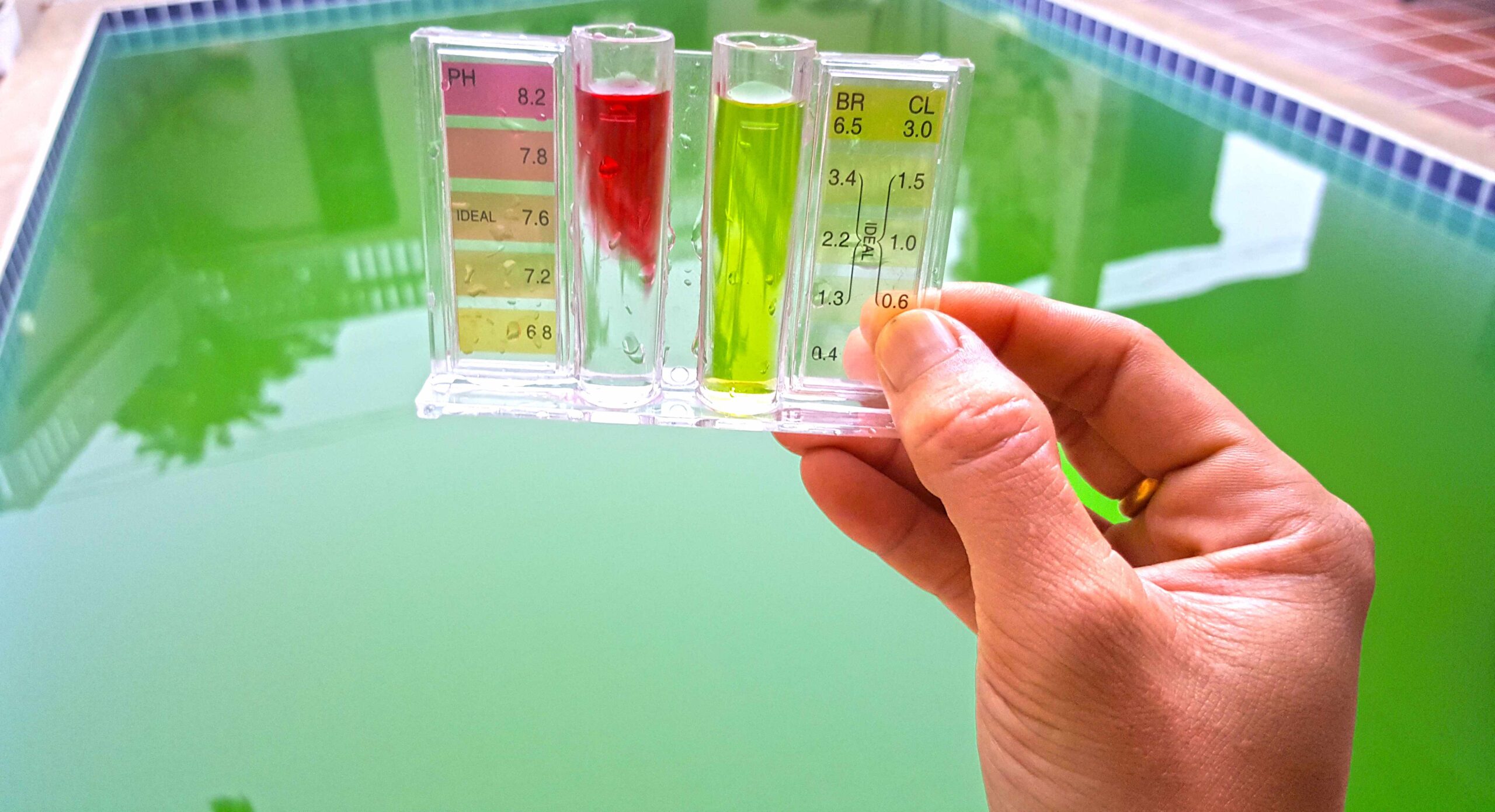Why Is My Chlorine High but Still Have Algae?

Keeping the right chemical balance in your pool is key to keeping the water clean and attractive. If you’ve been testing your pool and your chlorine levels are high, yet you’re still battling stubborn algae, you may be asking yourself what here is wrong. Chlorine is the main disinfectant that kills bacteria, viruses, and algae, but if you see algae in a pool with high levels of chlorine, there is probably something else going on. In the blog, we will explain why this could be happening and how to address the issue, along with advice on how to use a robot pool cleaner. Keeping a pool clean can seem like an impossible task.
What to Do If You Have Green Algae in Your Pool With High Chlorine?
Here are a few potential reasons if the chlorine level in your pool is satisfactory (1-3 ppm), but algae growth is persistently occurring. Here are some common causes:
A) What is Chlorine Lock (or Chlorine Demand)?
Your pool might even be experiencing chlorine lock, a situation in which the chlorine is not effective—even with high chlorine levels. This occurs when there is a greater load of contaminants in the pool, like leaves, debris, and even the outcome of sunscreen, body oils, as well as other materials. The chlorine becomes “used up” in this process and is no longer effective at killing bacteria and algae.
To correct chlorine lock you may need to shock your pool with a larger dose of chlorine to break the cycle and restore the chemical balance. A robotic pool cleaner for regular use like the Beatbot iSkim Ultra is an effective tool in the battle against debris, helping to get rid of organic matter slowly that when stuck in your pool ties up your chlorine.
Improper pH Levels
Chlorine works best at a pool’s pH level of between 7.4 and 7.6. Chlorine will be far less effective (even at technically high chlorine levels) if your pool’s pH is too high (alkaline). But when the pH is too low the water becomes corrosive (acidic) and can damage your pool equipment and surfaces while still failing to kill algae.
Regularly test the pH in your pool and make adjustments so the chlorine can do its job. Such a device like the Beatbot AquaSense vacuum cleaner for the pool can help you to make a cleaner pool, so you should get rid of debris ending up in the pH-unbalanced water.
Pool Circulation Issues
A chlorine solution moves throughout the pool, where it can encounter contaminants. If your pool’s circulation system isn’t functioning properly, whether as a result of a broken pump, blocked filter, or bad water flow, chlorine won’t distribute evenly to fight the spread of algae. This can leave sections of your pool susceptible to algae bloom.
One way to do this is to invest in a pool-cleaning robot like the Beatbot AquaSense Pro. They help with circulation, too, moving water through your entire pool to ensure that chlorine is reaching every corner and working to actively kill algae.
Algae Resistance
Alternatively, if there are really large colonies of algae in your pool, the algae could have become somewhat resistant to chlorine. This can be the case if the pool hasn’t been well-cared for, or when there’s been a history of undersanitizing or excessive chlorinating. And in some cases, it would take a lot of chlorine to get rid of certain algae types (like black algae).
In these cases, it is wise to utilize algaecides in combination with chlorine, particularly for common recurring types of algae. A swimming pool robot cleaner such as the Beatbot AquaSense will do the heavy work of cleaning up any physical algae build-up to allow the chemicals to work more efficiently.
High Cyanuric Acid Levels
Cyanuric acid, or pool stabilizer, helps protect chlorine from the sun’s UV rays, keeping it around longer in outdoor pools. Too much stabilizer, however, can “bind” chlorine, rendering it unable to work effectively. If your cyanuric acid levels are too high, your chlorine won’t be able to battle algae even if the chlorine readings are great.
This can be remedied by draining some of the pool water and then refilling it to dilute the cyanuric acid concentration. Regular cleaning with a pool vacuum robot will further maintain the clarity of the water in the pool and help you balance the chemicals for optimal usage.
What Can a Pool Robotic Cleaner Do For You?
A robot pool cleaner such as the Beatbot AquaSense Pro will help you in combating your algae problem. Powered by advanced technology, these machines make cleaning your pool easy by ensuring proper water circulation in the pool. Robotic pool cleaners help enhance water flow by collecting debris and scrubbing pool surfaces to ensure that chemicals such as chlorine spread throughout the pool uniformly.
Here’s how a robotic pool cleaner maintains clean water:
Better Circulation: Robotic cleaners improve water flow, keeping the chlorine where it needs to be to kill algae.
Debris Removal: A pool vacuum robot clears away leaves, dirt, and organic matter that lead to chlorine lock and poor water quality.
Algae Scrubbing: Some robotic pool cleaners, such as the Beatbot AquaSense, come with scrubbing brushes that help eradicate algae on pool surfaces for less manual scrubbing.
Incorporating a robotic pool cleaner into your cleaning arsenal in conjunction with maintaining balanced chemistry will help tackle any algae issues head-on whilst preventing vigorous algae growth before it starts!
Conclusion
So to sum it all up, if your chlorine levels are high yet you notice the presence of algae in your water, the cause is most likely a combination of chlorine lock, incorrect pH, circulation, or algal resistance. Testing and maintenance at regular intervals are significant to fix these conditions and to keep your pool clean as well as clear.
Bleeding-edge robot pool cleaners like Beatbot AquaSense Pro work wonders in cleaning debris, circulating the water, and clearing algae off the pool surfaces. With the right balance in your pool’s chemistry, you can sit back, relax, and enjoy your algae-free pool while knowing your algae issue has been resolved at the source.




